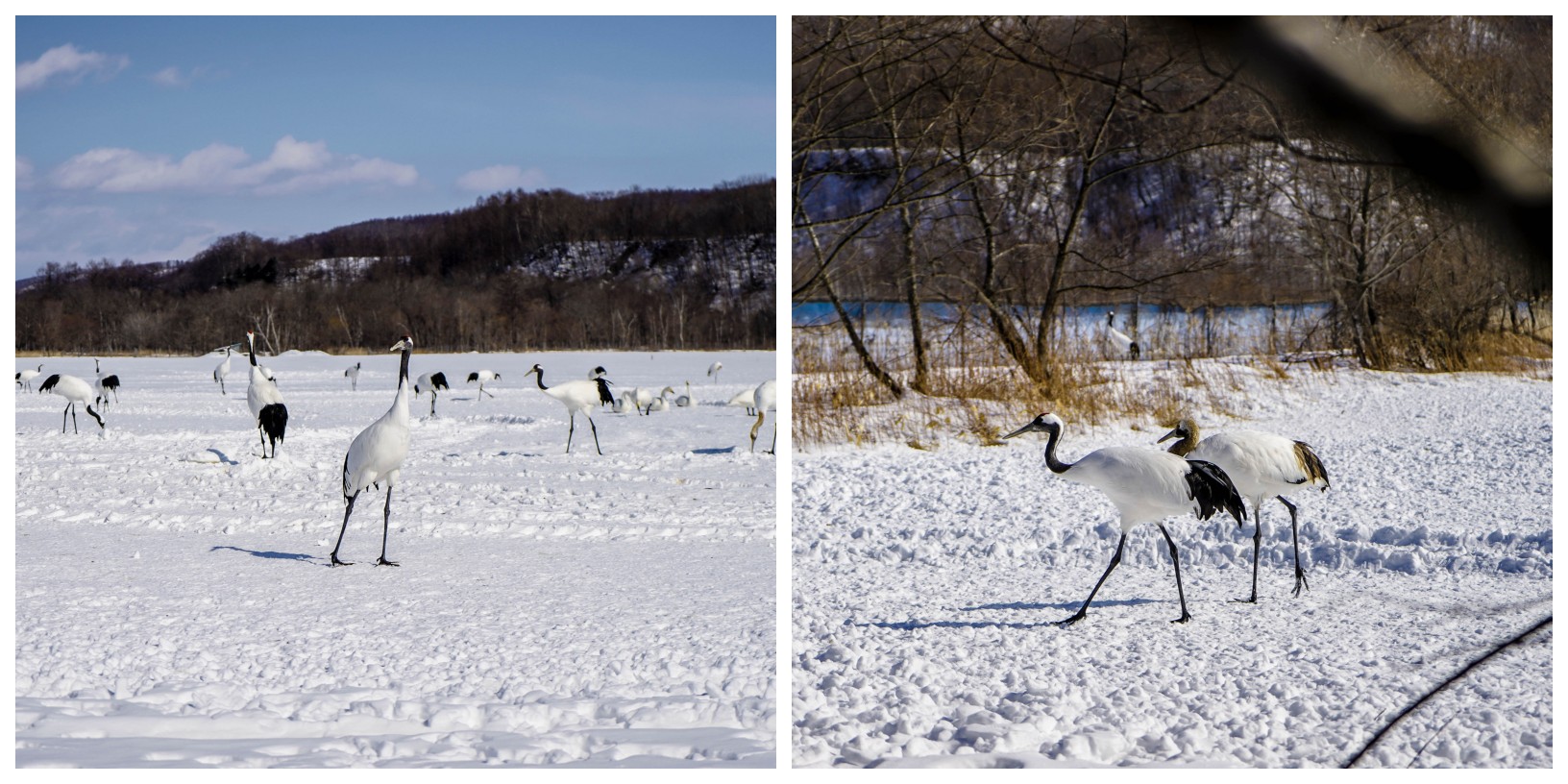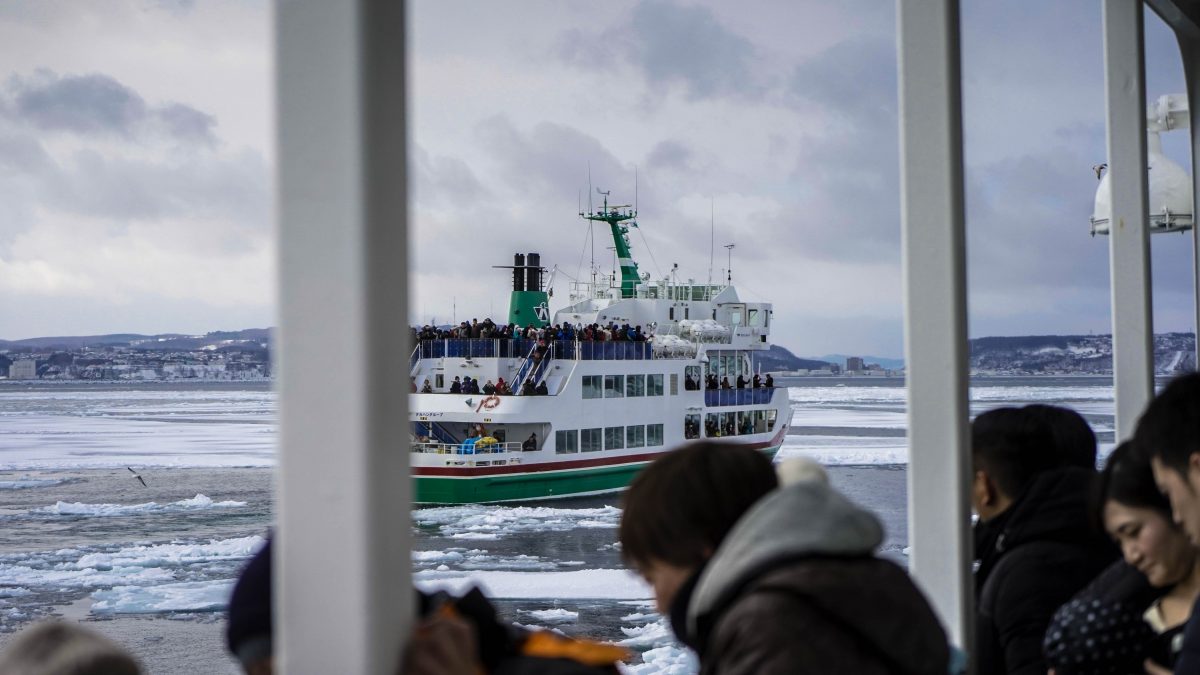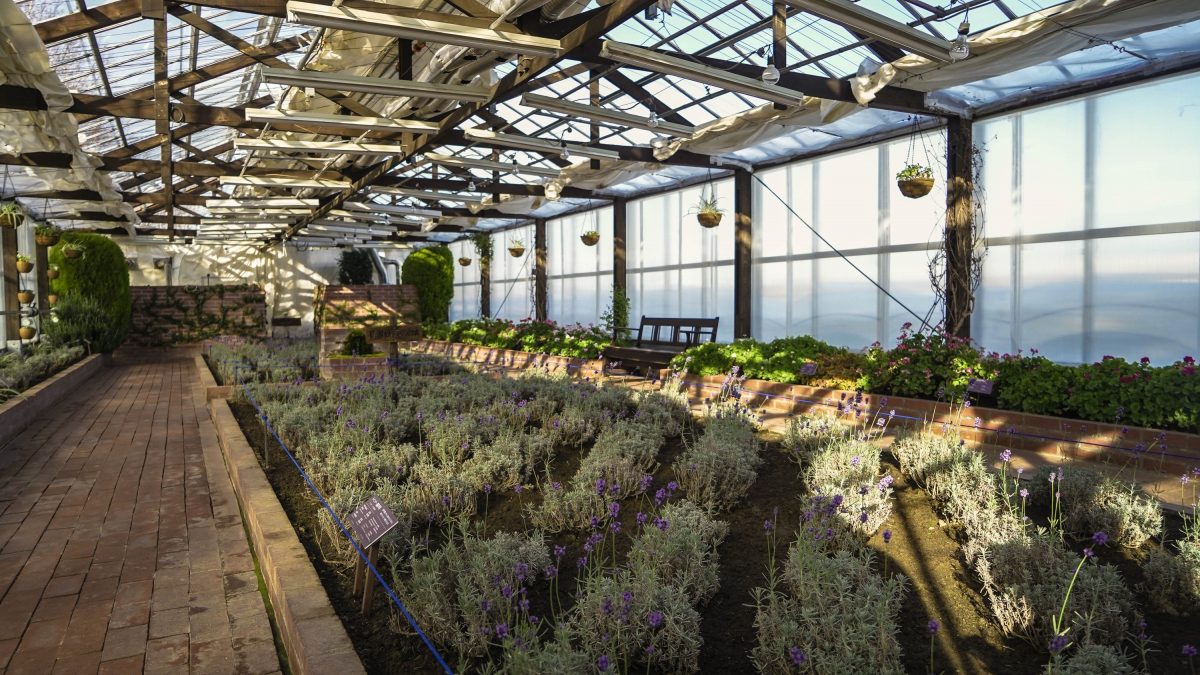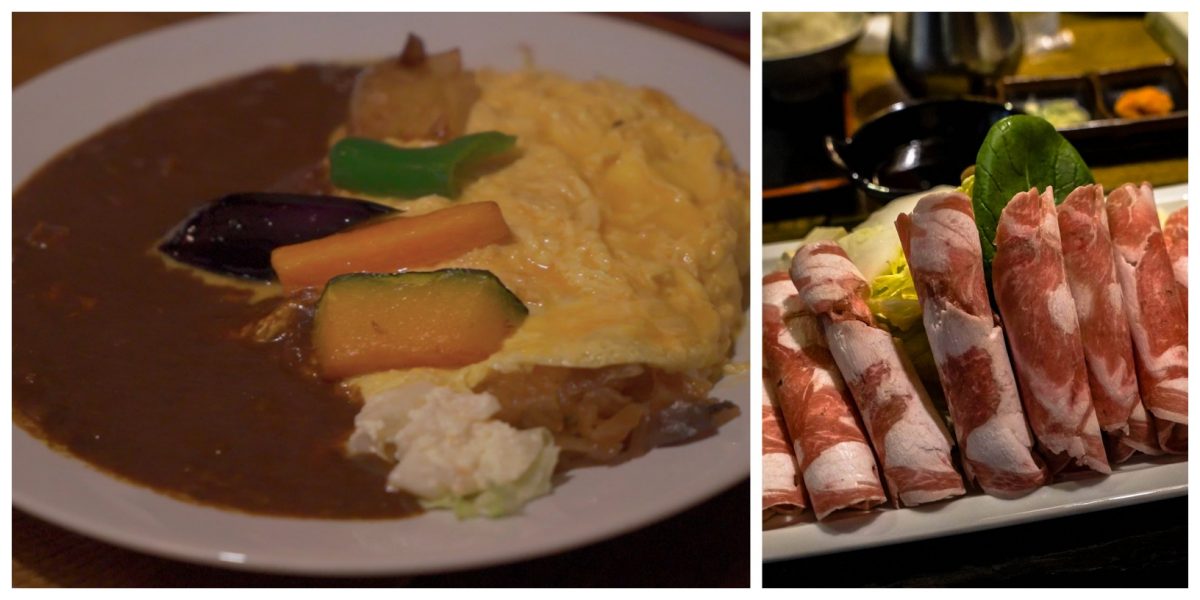If you’ve already explored the bustling streets of Tokyo, wolfed down bowls of ramen in Osaka, and are still craving a wholly different experience of Japan, traverse to its northern island of Hokkaido. Here you’ll be greeted by a taste of the country unlike you’ve known. The island boasts of six breathtaking national parks filled with primaeval forests, mountains and volcanoes; onsens; a fascinating Ainu indigenous culture; swathes of wildlife and possibly the world’s clearest and most beautiful lakes.
For those who love the cold, snowy Hokkaido boasts of an insatiable array of winter activities you can try, including skiing on the world’s best ski slopes in Furano and celebrating its famous winter festivals. But if summer travels are your thing, the island turns into a postcard-perfect landscape of beautiful flower fields, with temperatures mild and pleasant enough for you to do plenty of sightseeing in!
![]() =
=
Mapping Your Hokkaido Travels
I packed my bags in February for 5 days in Hokkaido, starting my travels in Kushiro, before venturing to Kiyosato, Abashiri and Asahikawa, and finally ending my journey in its capital Sapporo. Visiting in February meant that I’d be experiencing temperatures of -4°C and more of its wintery attractions like its snow festivals, snowmobile riding, ice fishing, and drift ice tours.
If you’re visiting Hokkaido for the first time, here’s a detailed five-day itinerary that will ensure you get to enjoy the very best of Hokkaido’s highlights!
Tip: Hokkaido is the second largest island in Japan and far larger than Tokyo or Osaka, so it’s important to note that the best sightseeing sights are not always close by. You will need to factor in distance and time wisely – so make use of this handy guide to plan your trip!
DAY 1: Kushiro

Upon arrival at Kushiro Airport, a 20-minute drive will take you to your first taste of Hokkaido’s rich wildlife at the Akan International Crane Centre. This research center that studies the endangered red-crowned crane species (“Tancho” crane) native only to Eastern Hokkaido. Thanks to its conservation efforts, its population now stands at 1,500! Within the facility are information displays and a feeding area simulating its natural habitat where you can observe the flocks of cranes resting, eating and flying. No doubt, it’s every nature photographer’s heaven!
Admission Fee: Akan International Crane Centre – 270yen (child) and 470yen (adult). For more information, visit their website here.

Revel in stunning lakeside views after at Lake Akan, located 75 kilometres north of Kushiro and a 40-minute drive away from the crane center. Lake Akan is a gorgeous completely frozen crater lake located within the Akan Mashu National Mark. Besides marveling at its views, you can also try various snow activities here like smelt ice fishing, banana boats, and even riding a snowmobile!
 While you’re here, try your hand at ice fishing the famous Wakasagi smelt on the frozen lake. Here’s how it works: Ice-fishing essentially involves drilling a hole through a frozen lake, dipping your line in and waiting for the smelt to bite. You can rent all of the equipment you’ll need like the rods, baits and tents and even deep-fry your fish after for delicious tempura! The famous Akan Lake Ice Festival is also held here at the lake and sees over 2.7 million visitors yearly. Expect fireworks every night throughout winter at this festival, which typically happens from February to March each year.
While you’re here, try your hand at ice fishing the famous Wakasagi smelt on the frozen lake. Here’s how it works: Ice-fishing essentially involves drilling a hole through a frozen lake, dipping your line in and waiting for the smelt to bite. You can rent all of the equipment you’ll need like the rods, baits and tents and even deep-fry your fish after for delicious tempura! The famous Akan Lake Ice Festival is also held here at the lake and sees over 2.7 million visitors yearly. Expect fireworks every night throughout winter at this festival, which typically happens from February to March each year.

For more information on 2020’s Akan Lake Ice Festival, visit the official website here.

Image Credit: Ainu Kotan (Official Website)
Also located on the banks of Lake Akan is the Ainu Kotan (“kotan” translates to “village” in the Ainu language), which lets you immerse in the culture and daily lives of the Ainu tribe. The Ainu are an indigenous tribe people hailing from Hokkaido and Honshu and its culture has been designated as a UNESCO intangible cultural heritage. The attractions in the kotan include the Lake Akan Ainu Theater Ikoro (where you can watch the ancient Ainu ceremonial dance), restaurants serving Ainu cuisine, and also souvenir shops selling artistic trinkets.

Image Credit: Ainu Kotan (Official Website)
Admission Fee: Ancient Ainu Ceremonial Dance – 1080yen (adults), 540yen (children). For more information on the Ainu Kotan, visit their website.

Image Credit: Forest of Akan Resort Tsuruga HANAYUUKA
if you’re looking to stay within the heart of Lake Akan area. The Forest of Akan Resort Tsuruga HANAYUUKA is a great option. Its rooms and massive lobby windows look out to unbeatable views of the lake’s beautiful waters, giving you the most epic sunrise and sunset views ever. The five-star resort decor bears European-inspired designs with unique Ainu motifs, with a sumptuous buffet spread you’ll love.
For more information, visit the Forest of Akan Resort Tsuruga HANAYUUKA’s official website here.
Day 2: Kushiro, Kiyosato & Abashiri
Just an hour from Lake Akan is the stunning Lake Mashu. Surrounded by steep forested cliffs and stunning snow-capped peaks, the 200-metre deep lake is Hokkaido’s clearest lake and often touted as Japan’s most beautiful. Visitors can soak up panoramic views of the lake from the observation decks positioned around the rim of the caldera – so get your cameras ready!

Head to the picture-perfect Lake Kusharro after, also known by its other moniker ‘Swan Lake’ because of the swans that gather there during winter. During winter, the lake’s surface is completely frozen, except for the hot spring that gushes out at its lakeside. Called Sunayu, this hot spring becomes a bath exclusively for the swans who migrate there every winter.

Where to Eat: Once you’re feeling peckish, grab a bite at Orchard Glass Restaurant. This cosy dining spot is within an active train station and whips up delicious Japanese grub like omelette rice and hearty beef stew, priced from 1100 yen to 1800 yen.
Once your bellies are filled, hike to see the Kaminoko Pond in Kiyosato, north of Lake Mashu. Also known as the ‘Mysterious Blue’ pond, this pond is nestled within a primaeval forest and often regarded as a spiritual place. The hike takes about an hour back and forth, and if you’re visiting during the winter, I’d recommend wearing snowshoes. If you’re lucky you might be able to spot wildlife like deers, foxes and even bears! Our guide shared that the water actually flows from Lake Mashu!
Depart from Kiyosato for Abashiri after, which will take about an hour and a half by car and check in for the night at Dormy Inn Abashiri, a cosy new business hotel in the city. The hotel is situated in a great location with convenience stores and multiple food restaurants right around the corner. Here’s an added perk: if you’re hit with nighttime hunger pangs, the hotel serves free ramen every night from 9.30 PM to 11 PM for all guests!

If you do decide to try one of Abashiri’s famed dining establishments however, book a table for dinner at the renowned Moyoro Hot Pot. This local hot pot spot features a rich variety of delicious Okhotsk seafood like the Okhotsk Salmon, seasoned using Okhotsk salt and paired with local Abashiri produce. The hot pot pays homage to the region’s Moyoro people and culture, who were said to have disappeared abruptly about a thousand years ago.
Delicious seafood, pretty impressive Draft Beer brewed locally in Hokkaido… it’s a match made in Hokkaido heaven. The hospitable chef-owner even treated us to gifts! P.S. Check out how blue the beer is!
Day 3: Abashiri & Sounkyo

While you’re still in Abashiri, start your day early and take a 5-minute drive from the hotel to the cruise departure terminal for a drift ice experience tour. The Icebreaker Drift Cruise only operates during winter at 3300 yen for an hour’s journey. And no, don’t expect icebreaker game sessions on the ship – it’s so-called for literal reasons.

As it cruises across the Okhotsk Sea, the ship breaks and cuts through the thin slates of ice floating on the water surface (called ‘drift ice’), which gets progressively thicker and larger. With beautiful expansive views, sea eagles flocking above, the crisp fresh air, this drift ice-watching experience was certainly a highlight.
Tip: Hokkaido’s drift ice season is between January to March, so if you want to experience their drift ice-watching tours, schedule your trip then! The drift ice is also thickest around Abashiri. With temperatures averaging -10degrees Celsius in February, be sure to bundle up in your down feather and heat-tech, as the sea breezes can be chilly!

If you’re interested in the science and geography behind the ‘sea ice’, make a date at the Okhotsk Ry-hyo Museum (Drift Ice Museum). Visitors will get to enjoy breathtaking panoramic 360-degrees views of the ice from the viewing deck, a -15 degrees Celsius freezing room containing actual drift ice, and other arctic experiences – even during the summer! You can also meet critters from the Okhotsk Sea, like the clione sea angel.

We had lunch in the museum’s Cafe and Restaurant 360, which served a delicious and generously-portioned bento set, and overlooked stunning views of the surrounding Abashiri city and Otsuke area.
Admission Fee: Okhotsk Ry-hyo Museum – 750yen (adult). For more information, visit their official website here.

About a ten-minute drive away is the Abashiri Prison Museum. Built in 1890, the prison’s European-style interiors earned its reputation as the ‘nicest’ prison in the world then. It still retains the exact original structure, which was designed for a maximum capacity of 1,200 inmates.

Image Credit: Flickr
Following the prison tour, we eventually made our way down to Sounkyo (do budget a travel time of three hours for the drive!) and checked into our hotel to freshen up and enjoy a quick dinner.

Best accessed by car, Sounkyo is a stunning part of Hokkaido known for its onsen resorts, waterfalls and mountains. Make a stop here to check out the Sounkyo Ice Festival in the evening! The admission ticket lets you explore the Instagram-worthy illuminated ice structures while enjoying a complimentary hot drink and soup. There are also ice bars, food and drink stalls, raffles you can take part in and even daily fireworks happening at 8.30pm throughout the festival!

Image Credit: (left) Sounkyo Ice Festival
Admission Fee: 300yen. For more information on the Sounkyo Ice Festival, visit their official website here.
Day 4: Asahikawa & Furano
Following our hotel buffet breakfast in the morning, we departed Sounkyo for Asahikawa. Asahikawa is perhaps best-known for its zoo and also the Asahikawa Ramen Village, which whips up the city’s delicious signature soy-based noodle soup. Kick off a fun-filled day at Asahiyama Zoo, which features over 800 animals from polar bears and penguins to even orangutan. It’s no surprise why it’s often regarded as Japan’s best zoo.

Check out the kawaii Penguin Walk at the zoo’s well-loved Penguin Enclosure! This famous walk happens only during its winter months and it’s also worth mentioning that the penguins are walking naturally on their own and not forced.

Admission Fee: 800yen (adults), Free (Children). For more information, visit the Asahiyama Zoo official website here.

Where to Eat: Here’s a surprise food discovery near Asahikawa Zoo: halal ramen! Yes, you read that right. I was intrigued to try the Ramen Yotsuba, a delightfully authentic and local ramen shop only a 15-minutes drive away from the zoo. It has a Halal menu that starts at 750 yen for a delicious bowl of ramen. Halal yet authentic ramen spots are a rare find, so this was a sweet discovery!

Image Credit: Farm Tomita
Feast your eyes after at Farm Tomita’s stunning lavender fields. Since being featured on a TV show, this flower farm become an iconic spot in its own right! The farm itself is run by Tomita who doesn’t charge an admission fee for flower-loving visitors.

Image Credit: Furano Tourism
With carpets of lush flowers in every imaginable shade blooming across the field during the warmer months, Farm Tomita’s best visited during the spring and summer. If you’re visiting during winter however, the beautiful lavender flowers can still be viewed in the greenhouse. The farm also has jaw-dropping scenery of the mountains in winter. P.S. We highly recommend trying the heavenly lavender soft serve which feels amazing in the cold.

Tip: To witness the flowers in its full bloom, it’s’ best to visit during Farm Tomita during Hokkaido’s spring and summer months! Admission is free – check out Farm Tomita’s official website here for more information.
After frolicking in the flower garden, we departed for Furano for an afternoon of adrenaline-inducing snowmobile riding at the New Furano Prince Hotel! For 3500 yen, you get to ride the mobile for a 20-minute course. It’s actually surprisingly easy to control and manoeuvre, as long as you follow the instructor leading the session!

Image Credit: Furano Prince
Be sure to check out the magical Ninguru Terrace after in the evening. This beautiful cluster of charming cottages and lodges houses specialty arts and crafts shops designed by the locals. Surrounded by pine tree forests, it looked like something out of a Christmas Wonderland in winter. There’s plenty of DIY crafts you can try, like creating your very own kaleidoscope and more.

Image Credit: Furano Tourism
Day 5: Furano & Sapporo

The Asobiya hot air balloon is definitely a ride to remember. Note: this balloon ride is only available during Hokkaido’s winter months. A 20-minute ride costs you 14000 yen but boy, are the views worth it. The balloon flight ascends 200 metres and takes you over fields, farm villages, cottages, and more – check out the view from above! And If you’re not a morning person, don’t worry as there are flights available throughout the day!

Image Credit (right): Asobiya Hot Air Balloon
Put your skiing skills to the test after at the Furano ski class which costs 6000 yen for a 2-hour ski session. For experienced skaters with personal equipment, there is no entrance free: all you have to do is purchase tickets for the gondola ride! If you’re a skiing novice, fret not; the instructors are incredibly patient and also fluent in English.

Image Credit: Prince Resort Furano
Wind down for a scrumptious curry house lunch at Kumagera, located just 3-minutes by foot from JR Furano Station. One of Furano’s most famous dining spots, it serves local Japanese grub like Sanzoku Nabe as well as their own original Kumagera homebrew sake! For 1200 yen, you’ll get to devour rich and delicious Japanese curry, which is a real treat in the cold.

It took a 3-hour drive to get from Furano to Sapporo, Hokkaido’s capital and Japan’s fifth largest city, well known for its legendary ramen, beer and annual Sapporo Snow Festival. Once you’re in Sapporo, the first thing on your agenda should be to try the galore of food options. We recommend the amazing fried rice with crab meat and uni at Chaco Izakaya.

Delve into the city’s history at the open-air Historic Village, or brew your interest in its iconic beer culture at the Sapporo Beer Museum. Sapporo isn’t all urban concrete and skyscrapers however; enjoy scenic strolls at its picturesque parks like the Moerenuma Park and Botanic Garden. Be sure to dive into more sightseeing after at its key landmarks like the Clock Tower, Old Government Building, Mount Moiwa and more!

Image Credit: Moerenuma Park (Facebook)
Once the sun sets, experiencing Sapporo’s amazing nightlife is a must – so head down to Susukino, the city’s entertainment district. This lively area is packed with stretches of bars, restaurants, karaoke shops, pachinko parlors and the famous Ramen Yokocho, a narrow street lined with stalls dishing out Sapporo’s iconic noodle.
Ending your travels in Sapporo means you’ll be departing from the international New Chitose Airport, which is incidentally also Hokkaido’s largest airport. There’s plenty of attractions here that kids will especially love like the Doraemon Waku Waku Sky Park and Hello Kitty Happy Flight. And if you’re craving a pre-flight meal, enjoy the fresh seafood available in the airport!
See You in Hokkaido!

Image Credit: Unsplash
And there you have it: a guide on how to experience the best of Hokkaido. From expansive snow-peaked landscapes and crystal clear lakes to a fascinating insight into Japan’s lesser-known indigenous Ainu culture, Hokkaido’s has many wonderful facets and I’ll admit: I’m now a Hokkaido convert. Granted, Hokkaido may not be the go-to destination for first-time travellers in Japan, but if you’ve already explored Tokyo, Kyoto and Osaka, make Hokkaido the next agenda on your travel bucket list this year.
Take our word for it – see you in Hokkaido!




